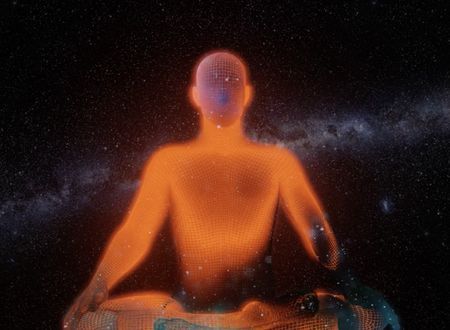Hare Krishna!
Ancient Indian Yogis have carried out profound research in theology and spirituality. While I have already mentioned the work of Adi Shankaracharya, great teacher of Advaita Philosophy in an earlier post, here I will discuss the work of another great master. He was the great master of Ashtanga Yoga. In his treatise “Yoga Sutras”, Sage Patanjali, has concisely described in just 195 shlokas the various steps of Yoga. Swami Prabhavananda of Ramakrishna Mission has written a beautiful & succinct commentary on the “Yoga Sutras of Patanjali”.
If you have read the Swami Prabhavananda’s version of “Yoga Sutras of Patanjali”, you can dive deeper into this text for better understanding. Dr. Edwin Francis Bryant has written a brilliant commentary called – “the Yoga Sutras of Patanjali”. He is an American Indologist. Currently, he is professor of religions of India at Rutgers University. He published & authored a number of articles on Vedic history, yoga, and the Krishna tradition. He received his Ph.D. in Indic languages and Cultures from Columbia University in 1997.
Some excerpts from the book:
- The practice of asanas develops the sattva guna, sublimating the gunas of rajas and tamas. (Foreword – x)
- The soul, that is, the actual source of consciousness, is mistaken to be distorted reflection by the mind, which considers awareness to be inherent within itself rather than the feature of the Purusha, an entity completely outside of and separate from itself. (lv)
- The Lord is a special soul. He is untouched by the obstacles [to the practice of yoga], karma, the fructification [of karma], and subconscious predispositions…the cause of samsara is the kleshas, obstacles – ignorance, ego, attachment, aversion and the will to live. (87)
- There are only two possibilities for the mind: Either it pursues the objects of senses, or it cultivates discrimination; put differently, it can be used either for enjoyment or liberation. (163)
- The compulsion to experience happiness [success, positive events or happenings] is so strong that one typically resigns oneself to the inevitable inconveniences that accompany it, under the rationalization – “that’s just life”. (209)
- Whatever happiness there may be in enjoyment in this world, and whatever greater happiness there may be in celestial world, they do not amount to one sixteenth of the happiness attained from the cessation of desire. (271)
- Actually, no one is bound, no one is liberated, no one transmigrates in samsara, it is actually Prakriti in her various forms who is bound, transmigrates and is liberated. It is ultimately buddhi that is subject to ignorance, buddhi that gains discrimination and insight and buddhi that exerts the will to attain liberation. The entire yoga process (Yama –> Niyama –> Asana –> Pranayaam –> so on) is undertaken by buddhi – the various degree of slight, mediocre and ardent practice are the product of buddhi’s application and enterprise , not Purusha’s. Purusha eternally remains a detached witness. (462) — as per Samkhya Philosophy.
- For there to be any coherence to the law of karma, the condition of living beings in samsara, and the decision to take up the path of yoga and follow the yamas and niyamas; or of friendship, compassion, joy and equanimity; or any of the prescriptions of the Yoga Sutras, one must assign the free will to the Purusha (atman), as the ultimate agent of its condition. (466)
See point 3. No mention of Lord’s name is given. This means whoever is our Ishta Devata, they can help us to uplift our spiritual quotient and help us to achieve emancipation.
See point 4 in light of Point 3 of Lord Vishnu – The Sustainer.
Enjoyment of world corresponds to what Lord Krishna does (cowherd, dance, music, lecturing etc.) or Lord Ram does (relationships, love, war, struggles etc.). Both being incarnations of Lord Vishnu (who comes to Earth in various incarnations for sustenance). Both follow their duties without attachment to worldly objects (of senses). And what does Lord Shiva do? He rejects the worldly sense objects, seeks liberation from any of the bounds of the world, and sits atop Mount Kailash in meditation. He is amazed by Lord Vishnu’s will to be in world and deal with its shackles, hence becomes His greatest bhakta – Lord Hanuman! In return Lord Vishnu meditates on Lord Shiva, being amazed by His capability to transcend the world (of sense objects) so easily! Amazing right?
Now read the point 6 in light of Bhagwad Geeta 12.12:
श्रेयो हि ज्ञानमभ्यासाज्ज्ञानाद्ध्यानं विशिष्यते |
ध्यानात्कर्मफलत्यागस्त्यागाच्छान्तिरनन्तरम् || 12||
Meaning – Better than mechanical practice is knowledge; better than knowledge is meditation. Better than meditation is renunciation of the fruits of actions, for peace immediately follows such renunciation.
Hence renunciation of all desires helps us attain highest peace.
Points 7 and 8 are from different schools of philosophy and they argue against each other. If free will exists, atman at least have to push an individual to start the journey towards its emancipation.
The book has just 4 chapters corresponding to the original – “Yoga Sutras of Patanjali”. The book has insights from various traditional commentators such as – Vyasa, Sankara, Vacaspati Misra and Vijnanbhikshu and many others. The book’s forward has been written by none other than famous yoga Guru – B.K.S. Iyengar, who later on wrote his own version of commentary on this classic work. The book is really thick with almost 700 pages (out of which you may read almost 550) in small font. Quoting from various sages, book has a great academic value, specially those wanting to research in Yoga.
In the “Concluding Reflections” section of the book there is a topic mentioned as “Purusha and Free Will”. Herein the author discusses an interesting topic – how the desire to get liberated starts and what is atman’s (Purusha’s) role in that. See point 8 above.
The book freely quotes texts from the Bhagwad Geeta, Shrimad Bhagwatam, Nectar of Devotion, and various Upanishads, Brahmanas & Agamas to corroborate its points. The depth of explanations is bound to bounce you over. The author has done a brilliant job to bring out various perspectives to the various sutras.
I bought this book back in late 2017 and could read just 22 pages (it has long introduction too of more than 50 pages explaining History of Yoga, Six schools of Indian Philosophy, Samkhya etc.) – which is just first 2 shlokas. I picked the book again after 2.5 years when lockdown had started, and then I finished it in few weeks. The book is definitely a fascinating read. Highly recommended.
Dr. Edwin F Bryant has also written – “Bhakti Yog – Tales and Teachings from the Bhagvata Purana”.
Hare Krishna!









Comments & Discussion
8 COMMENTS
Please login to read members' comments and participate in the discussion.